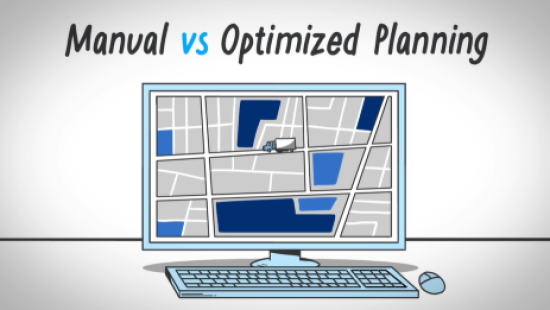Batch vs. Continuous Route Optimization: A Comparison of Two Methods Route Planners Can Use
Low-cost operations and high services levels are the goals of good route planning. Whether you're delivering goods or providing services, optimizing routes can make or break your bottom line. But what's the best approach? Let's examine batch optimization and continuous route optimization examples to uncover the optimal solution for your business needs.

Understanding Batch Optimization
Batch optimization, as the name suggests, takes a group of orders and optimizes them at a specific point in time. Imagine Bob, a planner at a furniture retail company, relying on a route planning solution that utilizes batch optimization. Each day, Bob waits until the order cut-off time to begin his planning process. This delay is due to the system needing time to sift through variables and constraints to calculate the most efficient routes.
The result? Bob is left waiting, sometimes for hours, for the optimization process to conclude. Even after the delivery routes are generated, Bob must review them, clean up unassigned orders, and potentially make manual adjustments. This tedious process not only consumes valuable time but also limits visibility into routes for both Bob and the warehouse, ultimately impacting customer experience and revenue.
Enter Continuous Route Optimization
On the other hand, continuous optimization offers a dynamic approach to route planning. Meet Samantha, a route planning specialist utilizing a continuous optimization engine. Unlike Bob's experience with batch optimization, Samantha's system works incrementally throughout the day, constantly evaluating combinations to create the most optimal routes.
With continuous optimization, Samantha gains real-time visibility into route planning results, allowing her to make adjustments on the fly. She can address exceptions promptly, ensuring operational performance remains high. By extending cut-off times and starting picking and staging earlier, Samantha maximizes revenue and enhances customer service without sacrificing efficiency.
SOLUTION HIGHLIGHT
Continuous Optimization
Descartes' continuous optimization produces better results, gives planners visibility to plans as they are being created, and reduces planning time.
Conclusion: The Continuous Route Optimization Advantage
Continuous optimization emerges as the clear winner for businesses aiming to streamline route planning and maximize fleet performance. While batch optimization may offer some benefits, its limitations in terms of time, visibility, and adaptability pale in comparison to the dynamic capabilities of continuous optimization.
Ready to revolutionize your route planning and fleet performance? Contact Descartes to explore how our continuous optimization solution can empower your business for success. In the ever-evolving landscape of route planning, this route planning method isn't just a game-changer—it's the future of efficient fleet management.
Fleet Resource Center
Expand Your Routing, Mobile & Telematics Knowledge
Recommended For You



